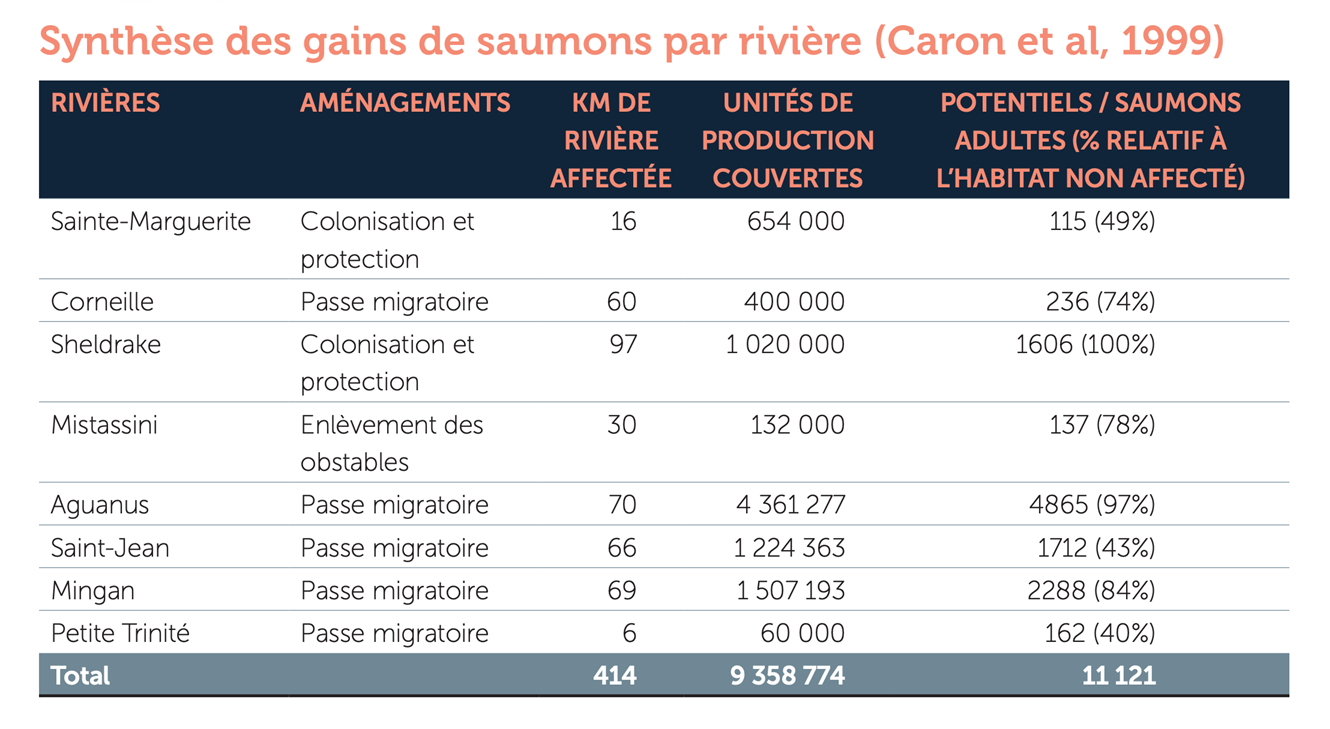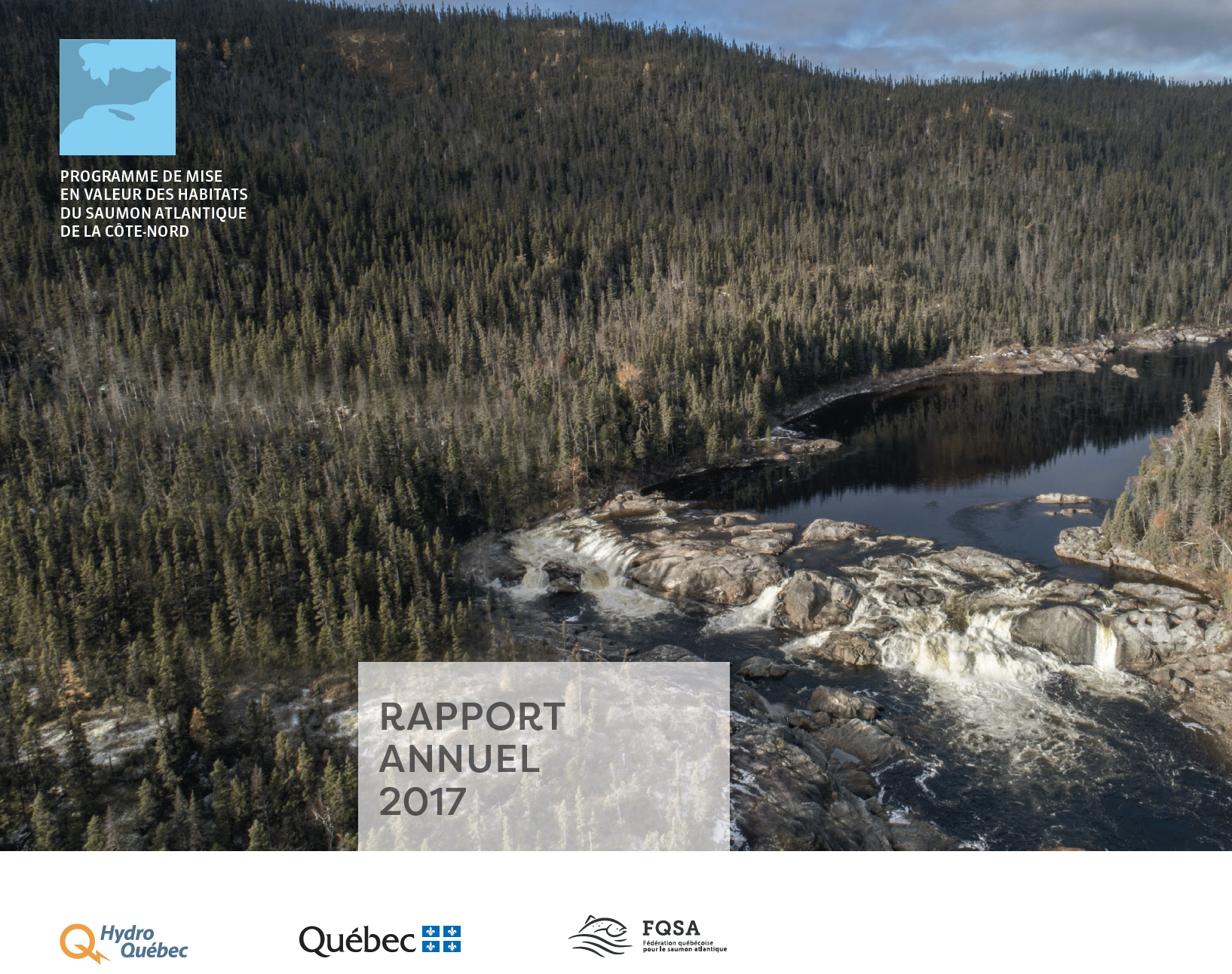Programs
NORTH SHORE HABITAT ENHANCEMENT PROGRAM
Program created as part of the development of the Romaine River hydroelectric complex on the territory of the Regional County Municipality of Minganie
DOCUMENTAIRE PROGRAMME DE MISE EN VALEUR CÔTE-NORD
THE PROGRAM
To support local communities and organizations involved in salmon river management, four partners (Hydro-Québec, Ministère du Développement durable, de l’Environnement et des Parcs, Ministère des Ressources naturelles et de la Faune, Fédération québécoise pour le saumon atlantique) signed a collaboration agreement in 2011 to develop and implement a $10 million program that was completed in 2021. The FQSA was responsible for managing this program.
Objectives
- Contribute to the enhancement or expansion of Atlantic salmon populations;
- Create or improve the productivity of Atlantic salmon habitats;
- Gain knowledge necessary to plan and monitor project performance;
- Protect the salmon resource;
- Encourage local community or river management agency involvement.
Territory
The area of intervention is defined primarily in Minganie, excluding the Romaine River watershed, but also covers all rivers located within the administrative boundaries of the North Shore, including Anticosti.
On this territory, 76 salmon rivers that are subject to fishing activities are distributed in five MRCs: Haute-Côte-Nord, Manicouagan, Sept-Rivières Minganie and Golfe-du-Saint-Laurent.
All projects had to be directly related to the program and addressed water issues, riverbeds and shorelines.
Results
All major development projects were carried out on sites where there was an impassable obstacle or one that was difficult for salmon to cross, depending on water level conditions.
The expected benefits are that new breeding habitat will be created thereby increasing the number of salmon spawning, and instead of having to wait for favourable conditions to migrate upstream, the resource also benefits from more protection by enabling the salmon to migrate safely and efficiently through obstacles rather than being constrained due to low water conditions and being at the mercy of poaching. In addition, the planning was designed to minimize salmon injury and mortality as they relentlessly attempt (natural migratory behaviour) to travel upriver and indirectly help them reach the spawning grounds in better physical condition.
Estimates are that up to 11,000 adult salmon could spawn on the 414 kilometres of river and some 9 million habitat production units would be positively impacted by the Program’s interventions (Caron et al., 1999). Comparatively speaking, the average salmon yield from these enhanced rivers could be up to 11 times higher than before. Across the Middle and Upper North Shore, the increase in salmon could theoretically be as high as 80% compared to the MFFP average return rate data (2010–2019) (13,127).

PUBLICATIONS
ANNUAL REPORTS | NORTH SHORE HABITAT ENHANCEMENT PROGRAM

